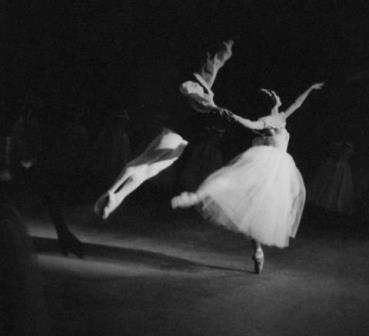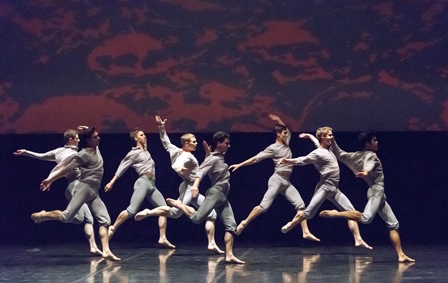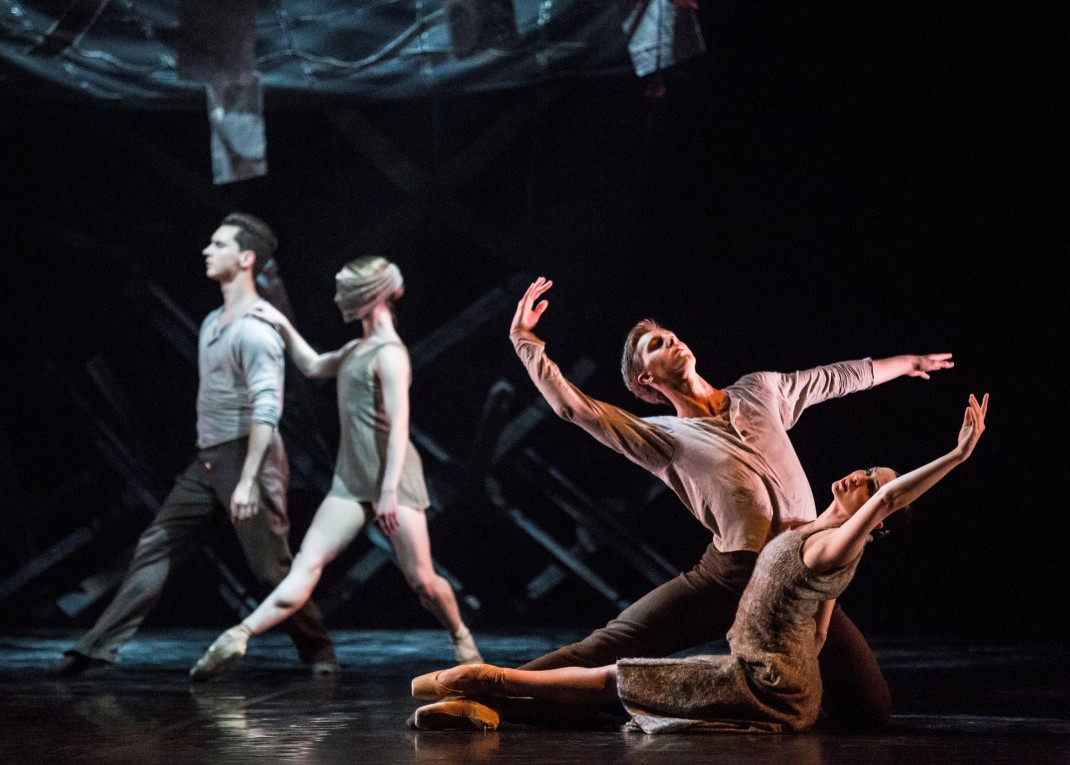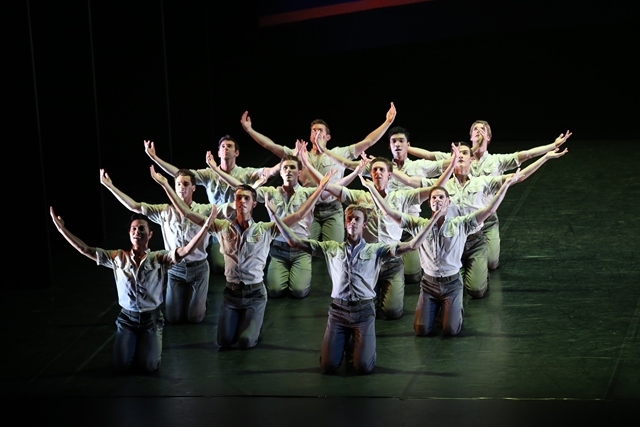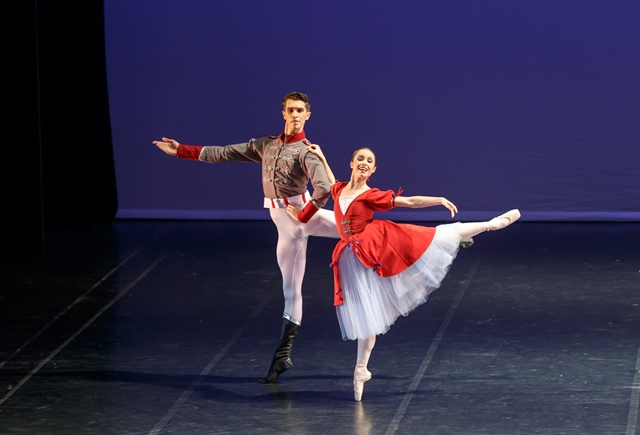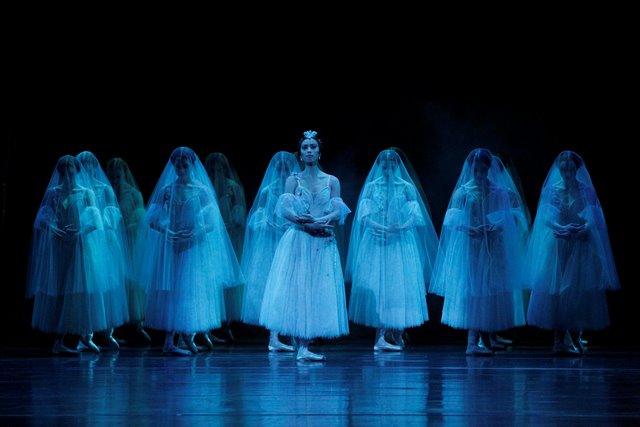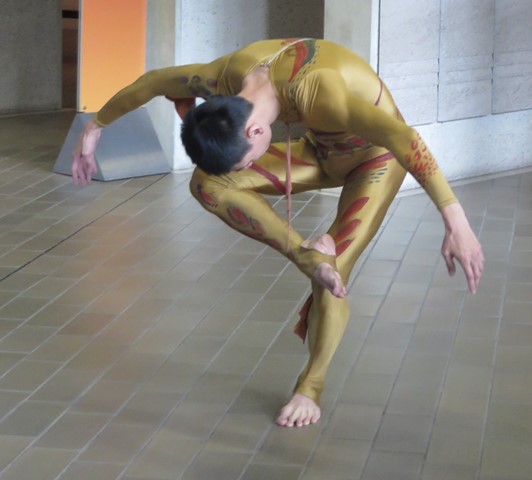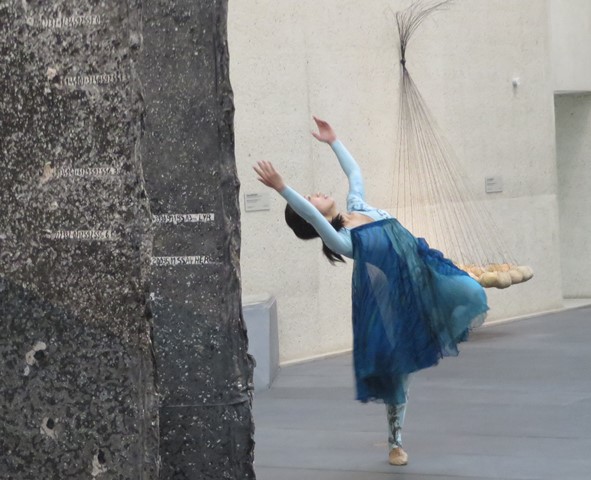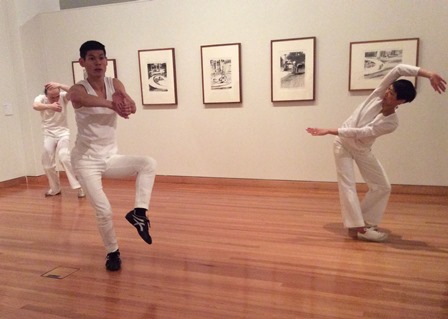20 June 2015, Whitney Museum of American Art, New York
Merce Cunningham made Crises in 1960 and it premiered on 19 August of that year at the American Dance Festival at Connecticut College. Made for four women and one man, it was, in Cunningham’s own words, ‘an adventure in togetherness’. He said: ‘I decided to allow for the dancers … contacting each other, not only through holding or being held, but also by outside means. I used elastic bands around a wrist, an arm, a waist or a leg. By one dancer inserting a hand under the band on another they were attached but also at the same instant free.’ It has always seemed to me, however, that Cunningham’s explanations are interesting, as indeed is this one about Crises, but that watching his dances is an entirely different experience. What the dance is ‘about’ is secondary to the nature of the vocabulary and the structure of the choreography.
Crises, which is performed to music by Conlon Nancarrow, was reprised for just three performances at the new Whitney Museum of American Art in New York as part of Anywhere in time: a Conlon Nancarrow festival. It was reconstructed and staged by former Cunningham dancer Jennifer Goggans and performed in the Whitney’s Susan and John Hess Theater, a beautiful performance space where white translucent blinds create a hazy backcloth of the Hudson River.
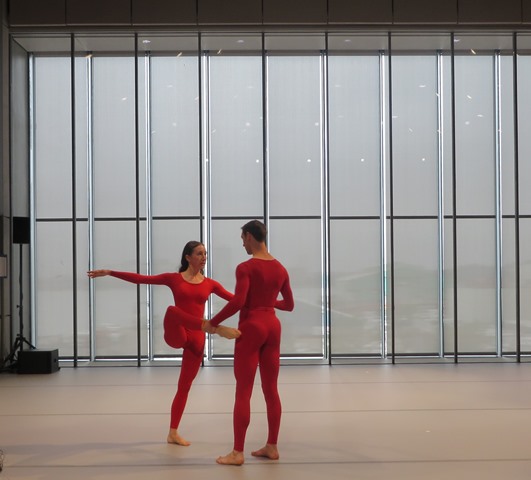
All five dancers, freelance professional performers working with the Merce Cunningham Trust Fellowship program, were beautifully in command of those features that make Cunningham’s choreography such an articulate and visually beautiful vocabulary. All five dancers filled the space around them as they moved and every movement was cleanly executed and beautifully in balance, whether via a centred or an off-centred movement. And there was a lovely flow to each movement as it moved smoothly onto the next. Then, every dancer was able to isolate different parts of the body to achieve particular effects. Tessa Montoya, for example, had moments when the upper part of her body shook wildly as her arms rippled up and down. At the same time the lower part of her body was held firmly and perfectly centered.
I especially enjoyed Erin Dowd’s dancing, right from the start when she entered from downstage and about halfway up the diagonal executed a stunning and unexpected grand jeté. Perhaps the highlight of her performance for me though was a duet with Benny Olk. He walked her down the diagonal supporting her from the waist. She faced upstage for the entire time and lent back from the waist as she stepped backwards, her long hair almost sweeping the floor. Her supporting leg was bent at the knee with the supporting foot on demi-pointe, while the working leg executed a high developpé to the front. Amazing control!
Another highlight was a sequence performed by Vanessa Knouse and others that again involved enormous control and core strength. It consisted of a slow rise, a bend of the knees while still on demi-pointe, a lift of one arm overhead and a bend back (with the dancer still on demi-pointe, knees bent) until the lifted arm reached the floor behind the dancer. The move, performed completely unsupported, was repeated many times. It was hypnotic viewing.
The discussion afterwards mostly concerned Nancarrow’s music, given that the performance was part of a festival devoted to him. We were given a brief history of how the music came to be recorded for use in this restaging of Crises, and heard some of Nancarrow’s music on a player piano. It seems that the Cunningham company used Nancarrow’s music before it had ever been recorded commercially and so gave a boost to his career. But some interesting comments were made and queries raised about whether, with Crises, the dance and the music reflected each other. Cunningham himself said: ‘The music … by Conlon Nancarrow was added after the dance was choreographed.’
Robert Rauschenberg designed the work, dressing the dancers in leotards and tights in various shades of red (including yellow as ‘an exaggerated extreme of red’). For this restaging, unitards were used and colours kept as close as possible to those of the originals.
It was an absolute delight to see this early Cunningham work with its inventive and surprising choreography. What luck to have been in the Whitney at just the right time!
Michelle Potter, 22 June 2015
NOTE: All quotes above are from David Vaughan, Merce Cunningham 65 Years, an iPad app from the Merce Cunningham Trust. [UPDATE: Unfortunately this app was never updated and is no longer available.]
